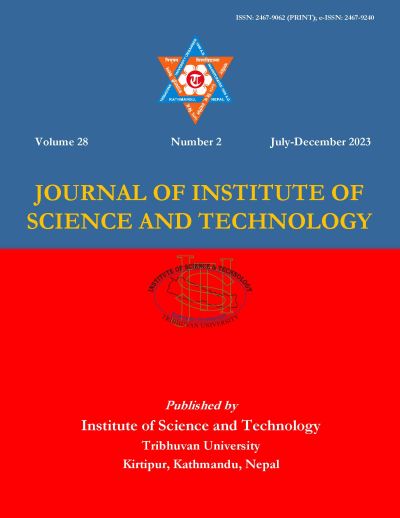Radiation Shielding Features of Glass Fiber Reinforced Cast Polyamide Using Phy-X/PSD and SRIM Software
DOI:
https://doi.org/10.3126/jist.v28i2.55428Keywords:
Glass fiber reinforced cast polyamide, Phy-X/PSD, radiation shielding parameters, SRIM, ion interactionsAbstract
The utilization of various materials for their nuclear radiation shielding properties has been the subject of a growing number of research and development projects. In this study, the radiation shielding characteristics of E-glass fiber reinforced cast polyamide were evaluated. E-glass is a form of glass fiber frequently utilized as a reinforcement in various composite materials to provide more durability, stiffness, and strength. Samples S1-S7 were defined according to various compositions of E-glass fiber contents (SiO2, Al2O3, B2O3, MgO, CaO, Na2O and K2O) and cast polyamide (C12H22N2O2). Within the energy range 0.015-15 MeV, the shielding parameters: Linear attenuation coefficient (LAC), mass attenuation coefficient (MAC), half and tenth value layers (HVL, TVL), mean free path (mfp), effective atomic number (Zeff), atomic and electronic cross sections (ACS, ECS), fast neutron removal cross-section (FNRCS) and exposure buildup factor (EBF) were analyzed. E-glass fiber reinforced cast polyamide S7 (70% glass fiber content) exhibited higher values of LAC, MAC and Zeff and lower values of HVL, TVL, and mfp proving it to be a better radiation shielding material among the samples. An abrupt reduction in values of Zeff was discerned within the photoelectric absorption-dominant region, contrasted with a stable trend within the Compton scattering-dominant region, and a marginal elevation was noted in the pair production region. The maximum and minimum values of FNRCS were observed for samples S1 (10% glass fiber content) and S5 (50% glass fiber content) respectively. Hence, S1 would be the most effective material in fast neutron shielding. At 35 mfp penetration depth, the minimum EBF values belonged to S7 in lower and intermediate regions (0.015-3 MeV) whereas S1 showed the minimum values at higher energy regions (4-15 MeV). Furthermore, the mass stopping power (MSP) and projected range (PR) of the samples for alpha and proton particles were determined using SRIM-2008 codes. S7 exhibited better shielding features for alpha and proton particles with lower values of mass stopping power and projected range. The reinforcement of glass fiber in the cast polyamide has been noticed to have a significant impact on the shielding performance of polymer composites.
Downloads
Downloads
Published
How to Cite
Issue
Section
License
Copyright (c) 2023 Institute of Science and Technology, T.U.

This work is licensed under a Creative Commons Attribution-ShareAlike 4.0 International License.
The views and interpretations in this journal are those of the author(s). They are not attributable to the Institute of Science and Technology, T.U. and do not imply the expression of any opinion concerning the legal status of any country, territory, city, area of its authorities, or concerning the delimitation of its frontiers of boundaries.
The copyright of the articles is held by the Institute of Science and Technology, T.U.




